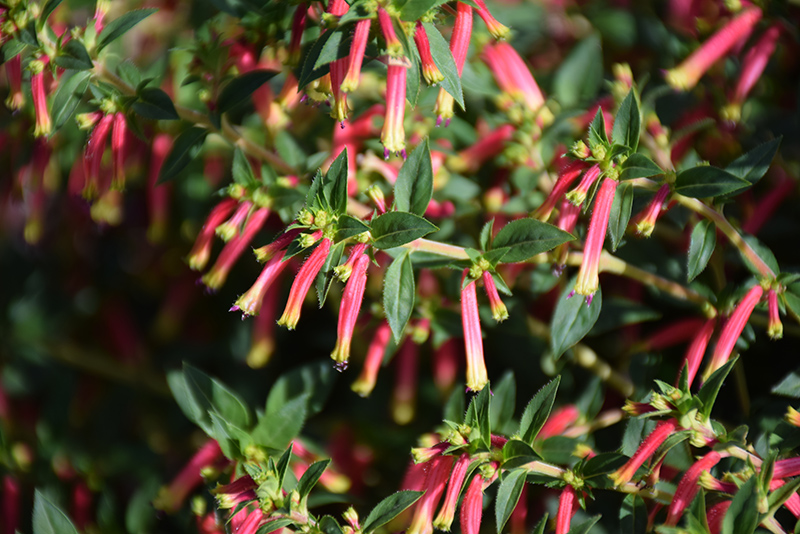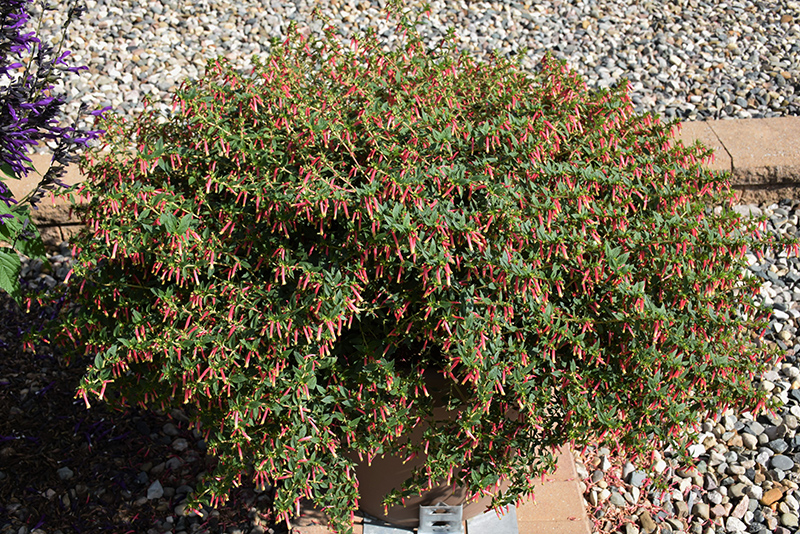Know Before You Go!
Get notified before our plants arrive in stores near you.
Plant Care Library
Height: 12 inches
Spacing: 14 inches
Sunlight:
![]()
![]()
Hardiness Zone: (annual)
Brand: Ball
Description:
Small, freely branching shrub or sub-shrub with unusual, airy bi-color rose and light yellow flowers, that fill the spaces in mixed container and garden displays; grown as an annual in cooler climates; heat and drought tolerant; disease resistant
Ornamental Features
Honeybells Cuphea has rose tubular flowers with yellow tips along the branches from mid spring to mid fall, which emerge from distinctive red flower buds, and which are interesting on close inspection. Its small pointy leaves remain green in color throughout the year.
Landscape Attributes
Honeybells Cuphea is an open multi-stemmed annual with a ground-hugging habit of growth. Its relatively fine texture sets it apart from other garden plants with less refined foliage.
This is a relatively low maintenance plant, and is best cleaned up in early spring before it resumes active growth for the season. It is a good choice for attracting bees, butterflies and hummingbirds to your yard. It has no significant negative characteristics.
Honeybells Cuphea is recommended for the following landscape applications;
- Mass Planting
- General Garden Use
- Container Planting
Planting & Growing
Honeybells Cuphea will grow to be about 12 inches tall at maturity, with a spread of 18 inches. When grown in masses or used as a bedding plant, individual plants should be spaced approximately 14 inches apart. Its foliage tends to remain dense right to the ground, not requiring facer plants in front. Although it's not a true annual, this plant can be expected to behave as an annual in our climate if left outdoors over the winter, usually needing replacement the following year. As such, gardeners should take into consideration that it will perform differently than it would in its native habitat.
This plant does best in full sun to partial shade. It does best in average to evenly moist conditions, but will not tolerate standing water. It is not particular as to soil pH, but grows best in rich soils. It is somewhat tolerant of urban pollution. Consider applying a thick mulch around the root zone in winter to protect it in exposed locations or colder microclimates. This particular variety is an interspecific hybrid.
Honeybells Cuphea is a fine choice for the garden, but it is also a good selection for planting in outdoor pots and containers. Because of its spreading habit of growth, it is ideally suited for use as a 'spiller' in the 'spiller-thriller-filler' container combination; plant it near the edges where it can spill gracefully over the pot. Note that when growing plants in outdoor containers and baskets, they may require more frequent waterings than they would in the yard or garden.
A NetPS Plant Finder tool


